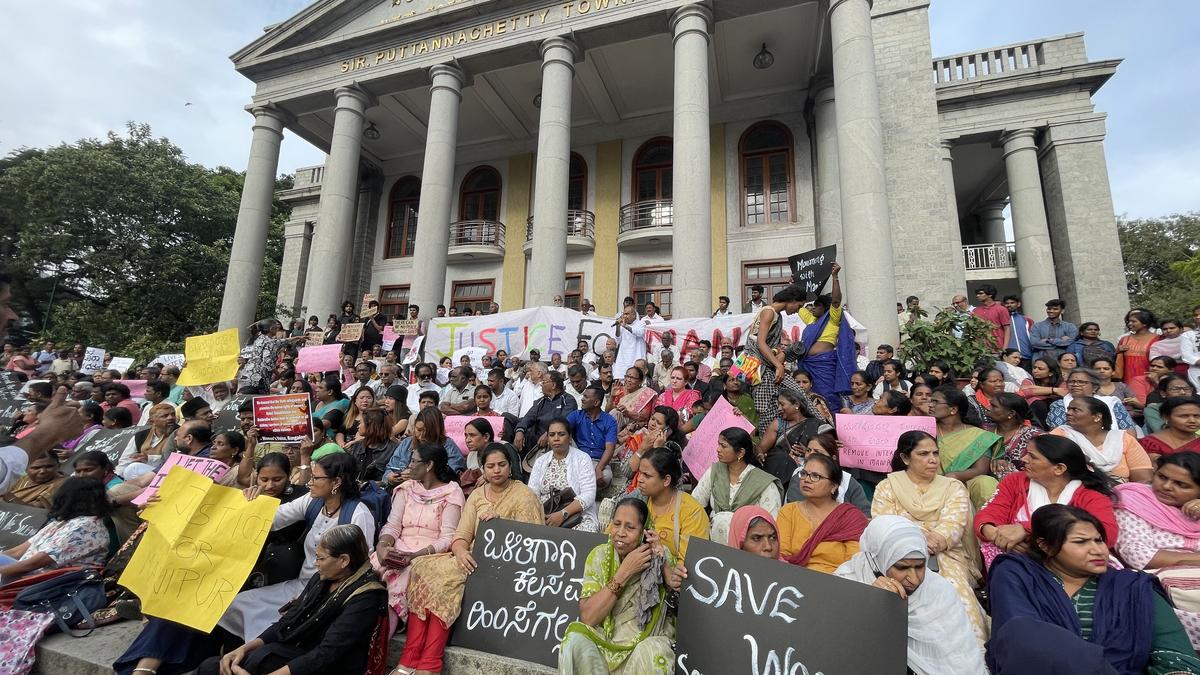
What has restricting protests to Freedom Park meant for Bengaluru and its people? Premium
The Hindu
“One of my favourite Bengaluru memories is gathering at Town Hall and singing,” says Vinay Sreenivasa, breaking into a resistance song. Vinay has attended many such protests in different places in the city and even remembers sitting on the steps of Vidhana Soudha, another former protest site, eating corn. Today getting anywhere close to the steps of Vidhana Soudha means going through many layers of security.
“One of my favourite Bengaluru memories is gathering at Town Hall and singing,” says Vinay Sreenivasa, breaking into a resistance song. Vinay has attended many such protests in different places in the city and even remembers sitting on the steps of Vidhana Soudha, another former protest site, eating corn. Today getting anywhere close to the steps of Vidhana Soudha means going through many layers of security.
Today a Bengalurean can only protest in Freedom Park, the 21-acre landmark on Seshadri Road that once housed the city’s Central Jail. Even in Freedom Park, protests can only take place in a designated area “a parking lot where you are supposed to gather and raise slogans…where no one can see you,” says the lawyer and activist at a recent panel discussion titled Art as Activism: Creative Avenues for Voicing Dissent. “This restriction has not just made it difficult to protest anywhere, it has also made overall dissent itself very difficult.”
The event, which was held at the Bangalore International Centre (BIC), was centred around two broad topics: the ramifications of the ruling of the Karnataka High Court that limits public protests in Bengaluru to Freedom Park and how art can serve as a medium for dissent and drive social change. The panel, which Jhatkaa.org’s Divya Narayanan moderated, also had visual artist Shilo Shiv Suleman and poet and academician Mamta Sagar, both of whom frequently use their art practice to drive conversation and catalyse social change.
Divya says protests, campaigns and movements have often been a powerful instrument globally and historically, not just in acquiring justice, but also in driving public awareness. “In India, freedom of expression is a constitutional right and raising concerns. Engaging with civil society movements and campaigns is fundamental to democracy,” she says.
And yet, these non-violent movements are often met with high-handedness and repression, she says. “Our systems and infrastructure are increasingly becoming more opaque...intolerant to public discourse.”
In 2021, Anganwadi workers took out a rally in Bengaluru, demanding better pay. “They wanted their salaries to be hiked since ₹8,000 was not enough to take care of their families,” says Vinay. It was in that context that an interim order was passed that protests could only be held at Freedom Park. That was the beginning of restricting protests, he says.
This move, he believes, has deeply impacted the average Bengalurean’s right to free speech. “The Constitution says that we have the freedom of right and expression and also peaceful assembly,” he says. “Protest leads to some justice… that is why it is important to retain the right to protest,” he says, pointing out that this new rule has already made it difficult for people, especially from marginalised communities, to seek justice.

The Karnataka government has drafted a comprehensive master plan for the integrated development of Kukke Subrahmanya temple, the State’s highest revenue-generating temple managed by the Hindu Religious Institutions and Charitable Endowments Department. The redevelopment initiative is estimated to cost around ₹254 crore and aims to enhance infrastructure and facilities for devotees.












